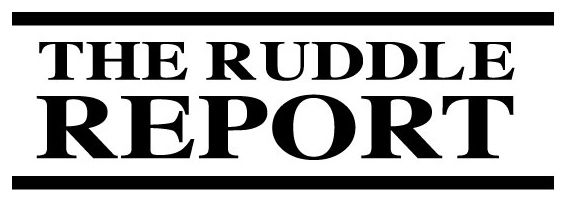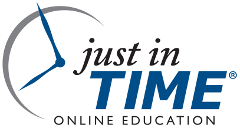
New “Kid” on the Block: WaveOne Single-File Technique
I would like to briefly talk about new technology and the new "kid" on the block. Many of you have heard about shaping canals using a reciprocating method so when you begin to think about shaping canals there’s been so many different methods to describe doing it. First, in the older era where we were doing it with stainless steel files and we might have done it with balanced-force technique, we might have done it push-pull, we might have done it with reciprocation... That’s not really the discussion today, it’s just to say that there’s been a lot of different ways to shape a canal.
With the advent of rotary, we spun files clockwise in canals and that was the new thought process. Nickel-titanium, because of its shape memory and its flexibility, it allowed us to overcome a lot of the deficiencies that we used with using hand files, specifically stainless steel files.
Well, we settled into nickel-titanium. First there were two instruments in about 1992-3, and I think today you could count up internationally something close to perhaps as many as 30 different file systems that colleagues have to choose from among in order to shape canals in the safest, most efficacious way.
So, what I’d like to talk about is some new technology. Angelo Sargenti back in the 70s had a handpiece that would chuck-up an instrument and the instrument would be moved vertically up and down, in little short 1/2 to 1mm strokes, and listen carefully, it also additionally reciprocated clockwise and counterclockwise as it was simultaneously moving up and down on these short amplitude strokes. That was something we knew in the 70s.
Well, then a little bit later a Frenchman, Guy Levi, he visited my office, also in the late 70s, and he wanted me to notice his handpiece. His handpiece, he thought, was quite innovative because again it could do a complex movement. In other words, the operator holds the handpiece but yet the file is being driven, again, in short amplitude strokes and there was some reciprocation.
We know SybronEndo has a reciprocating handpiece. We know Essential Dental Systems out of New York has a reciprocating handpiece. So, you’re not unfamiliar with reciprocation as a distinction from a full rotary preparation. So, which is best? I’ll discuss this on another blog, right now we’re just talking about ways to shape a canal.
Just to quickly answer the rhetorical questions – It has been purported that reciprocation is faster because presumably you’re not changing files and the time that takes. And, importantly, the biggest report in the literature and advocated in lectures and workshops is that reciprocation is significantly safer because we’re not overloading a file and we could either talk about torque failures or cyclic fatigue. So, reciprocation has been claimed to be a way to dramatically increase the safety when shaping canals.
Dentsply Tulsa Dental Specialties in 2011 (launched) what’s called WaveOne technology. This is a single-file technique. I will repeat – this is a single-file technique and of course, which file you choose from among is based on your radiographic observation. You’re looking at canals radiographically for the length, the curvature and the diameter of the canal. But, that’s just a two-dimensional picture of a three-dimensional object. You could also use cone-beam technology to further appreciate the anatomy. But then once you access into a tooth and drop in, you can immediately look at the cross-sectional diameter of the orifices at the floor of the chamber. This is another piece of information that might help direct you on which file to select.
Of course, the third thing is when you begin to talk about glide path management, you’re going to do small-sized hand files, ISO hand files, like 06s, 08s and 10s into these canals and you’ll begin to appreciate how much space is available for these instruments to move through. So, you can learn a lot about a hand file. Is it snug? Is it really tight in there? Or, is it sloppy loose and floating around like a molecule?
So, back to the new technology, WaveOne. WaveOne has three instruments. The small instrument is a 21/06. The medium-size instrument is a 25/08; it’s called the primary file because it will be used virtually in all cases. And then there’s a larger D0 file and it’s a 40/08. So, that’s the large. So, we have three instruments again: the small, 21/06, the primary, 25/08, and the large, 40/08. So, it’s a single-file technique because if you have some experience, if you look at well-angulated, multiple horizontally-angulated films, if you safely drop into pulp chambers and assess the cross-sectional diameter of the orifice, if you begin to scout the canals to secure a glide path... you should be able to pick the appropriate file for that canal and then it requires one instrument.
These instruments do reciprocate but here’s the critical distinction. Unlike all other files in the world that reciprocate, they reciprocate either 30 clockwise, 30 counterclockwise, 45 clockwise, 45 counterclockwise, 60- 60, you name it, they’ve chosen the angles. But the key is, it’s a uniform back-and-forth direction. What makes WaveOne absolutely unique is it’s the first file in the world that was actually built with a cross-section to optimally work when the movements are not equal. What that means is the counterclockwise movement is significantly greater than the clockwise movement.
Now, some of you are already thrown, but WaveOne has a reversed helix. So what that means, instead of having a right-handed thread, it has a left-handed thread. So, the cutting direction is counterclockwise. So the counterclockwise direction is significantly greater than the clockwise movement which means you now have a very, very sophisticated instrument whose cross-section and movement allow it to shape complex anatomy.
Stay tuned, we’ll talk a lot more about this in the future. And, of course, my Hands on Seminars in Santa Barbara will give you the experience and the opportunity to try.



